Gustavo Fraidenraich
Boosting 5G on Smart Grid Communication: A Smart RAN Slicing Approach
Aug 30, 2022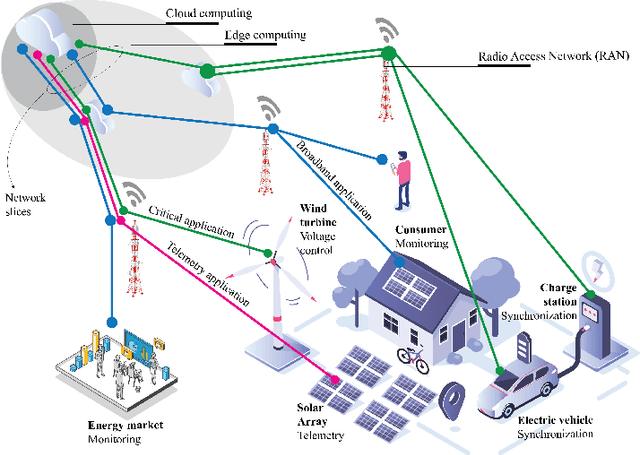
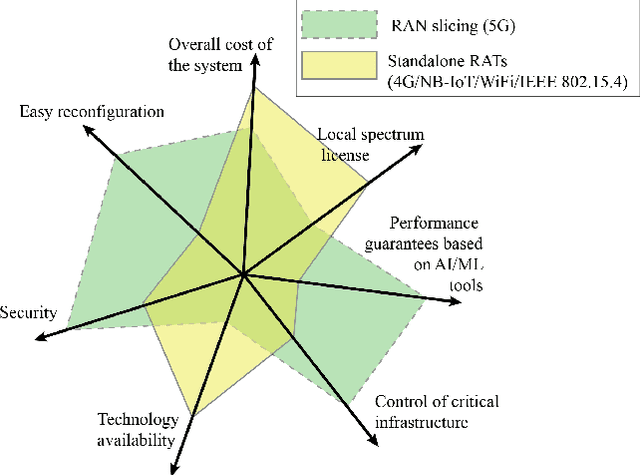
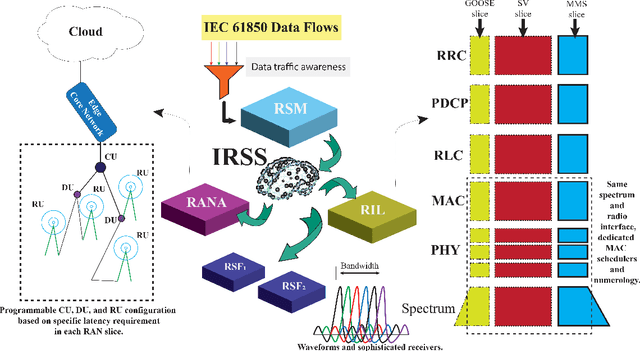
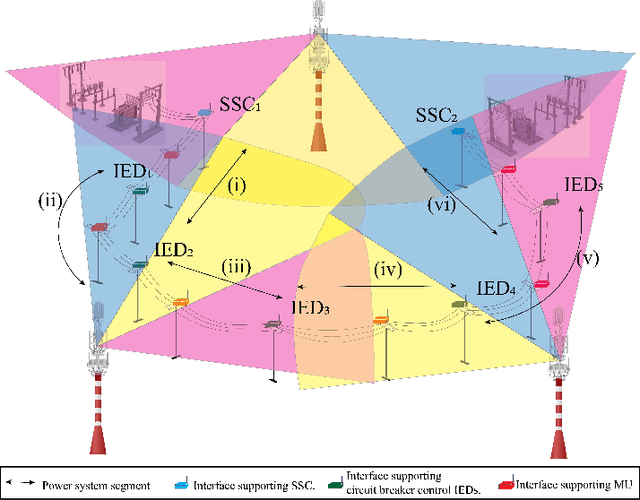
Abstract:Fifth-generation (5G) and beyond systems are expected to accelerate the ongoing transformation of power systems towards the smart grid. However, the inherent heterogeneity in smart grid services and requirements pose significant challenges towards the definition of a unified network architecture. In this context, radio access network (RAN) slicing emerges as a key 5G enabler to ensure interoperable connectivity and service management in the smart grid. This article introduces a novel RAN slicing framework which leverages the potential of artificial intelligence (AI) to support IEC 61850 smart grid services. With the aid of deep reinforcement learning, efficient radio resource management for RAN slices is attained, while conforming to the stringent performance requirements of a smart grid self-healing use case. Our research outcomes advocate the adoption of emerging AI-native approaches for RAN slicing in beyond-5G systems, and lay the foundations for differentiated service provisioning in the smart grid.
Performance analysis of downlink MIMO-NOMA systems over Weibull fading channels
May 24, 2022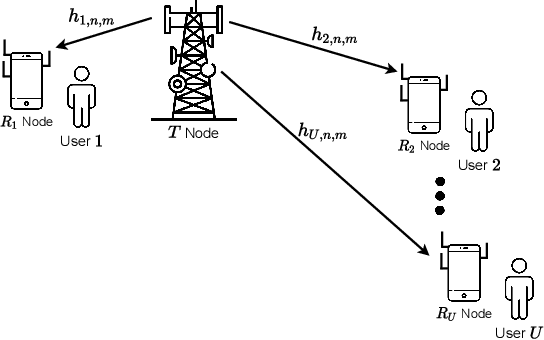
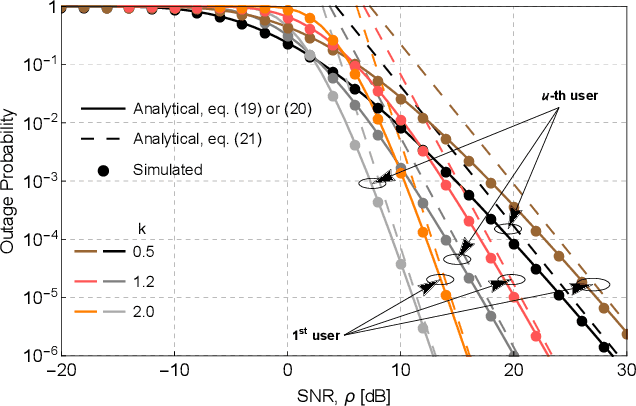
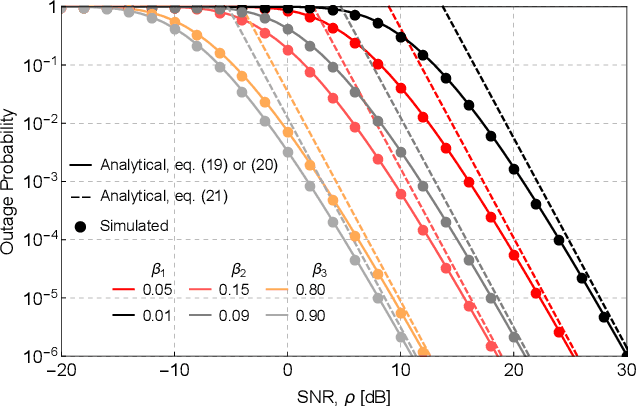
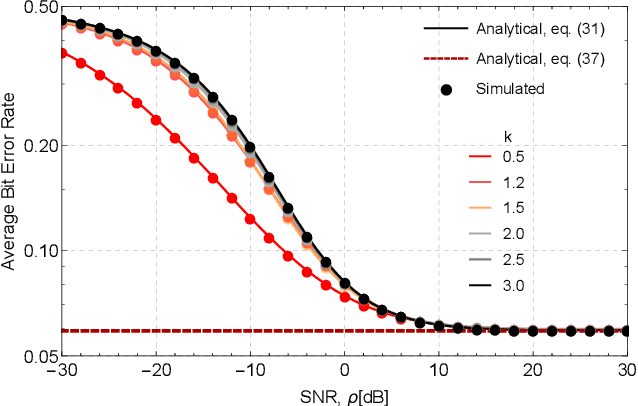
Abstract:This work analyzes the performance of a downlink multiple-input multiple-output (MIMO) non-orthogonal multiple access (NOMA) multi-user communications system. To reduce hardware complexity and exploit antenna diversity, we consider a transmit antenna selection (TAS) scheme and equal-gain combining (EGC) receivers operating over independent and identically distributed (i.i.d.) Weibull fading channels. Performance metrics such as the outage probability (OP) and the average bit error rate (ABER) are derived in an exact manner. An asymptotic analysis for the OP and for the ABER is also carried out. Moreover, we obtain exact expressions for the probability density function (PDF) and the cumulative distribution function (CDF) of the end-to-end signal-to-noise ratio (SNR). Interestingly, our results indicate that, except for the first user (nearest user), in a high-SNR regime the ABER achieves a performance floor that depends solely on the user's power allocation coefficient and on the type of modulation, and not on the channel statistics or the amount of transmit and receive antennas. To the best of the authors' knowledge, no performance analyses have been reported in the literature for the considered scenario. The validity of all our expressions is confirmed via Monte-Carlo simulations.
Doppler Estimation for High-Velocity Targets Using Subpulse Processing and the Classic Chinese Remainder Theorem
Jan 27, 2021
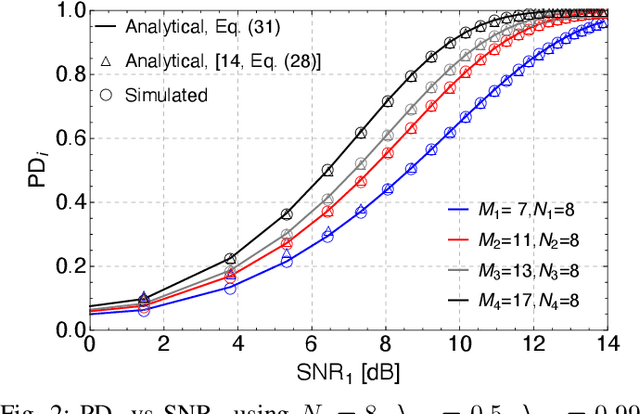
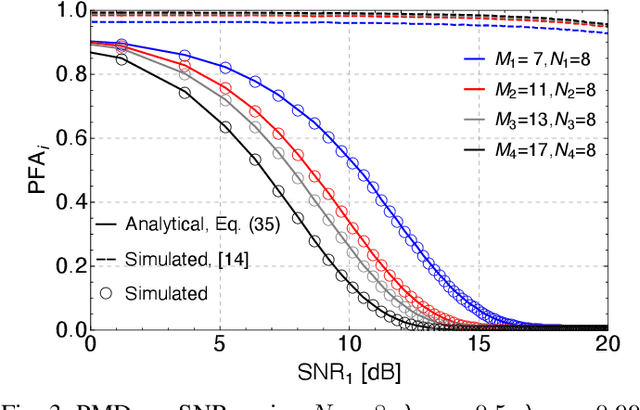
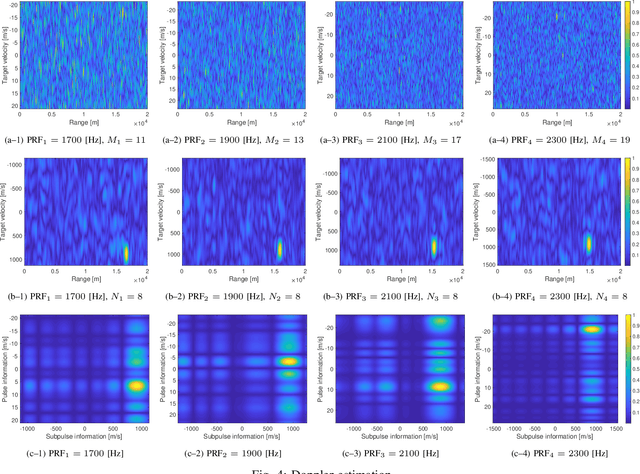
Abstract:In pulsed Doppler radars, the classic Chinese remainder theorem (CCRT) is a common method to resolve Doppler ambiguities caused by fast-moving targets. Another issue concerning high-velocity targets is related to the loss in the signal-to-noise ratio (SNR) after performing range compression. In particular, this loss can be partially mitigated by the use of subpulse processing (SP). Modern radars combine these techniques in order to reliably unfold the target velocity. However, the presence of background noise may compromise the Doppler estimates. Hence, a rigorous statistical analysis is imperative. In this work, we provide a comprehensive analysis on Doppler estimation. In particular, we derive novel closed-form expressions for the probability of detection (PD) and probability of false alarm (PFA). To this end, we consider the newly introduce SP along with the CCRT. A comparison analysis between SP and the classic pulse processing (PP) technique is also carried out. Numerical results and Monte-Carlo simulations corroborate the validity of our expressions and show that the SP-plus-CCRT technique helps to greatly reduce the PFA compared to previous studies, thereby improving radar detection.
 Add to Chrome
Add to Chrome Add to Firefox
Add to Firefox Add to Edge
Add to Edge